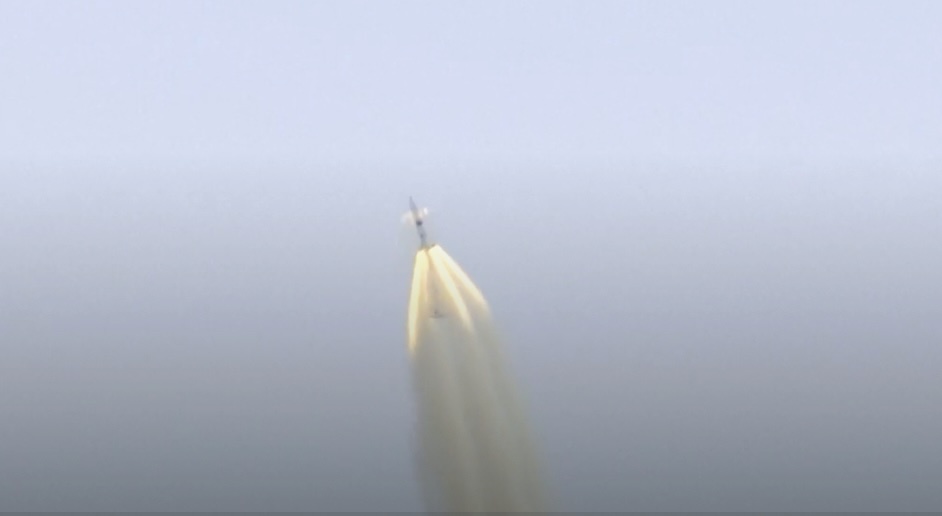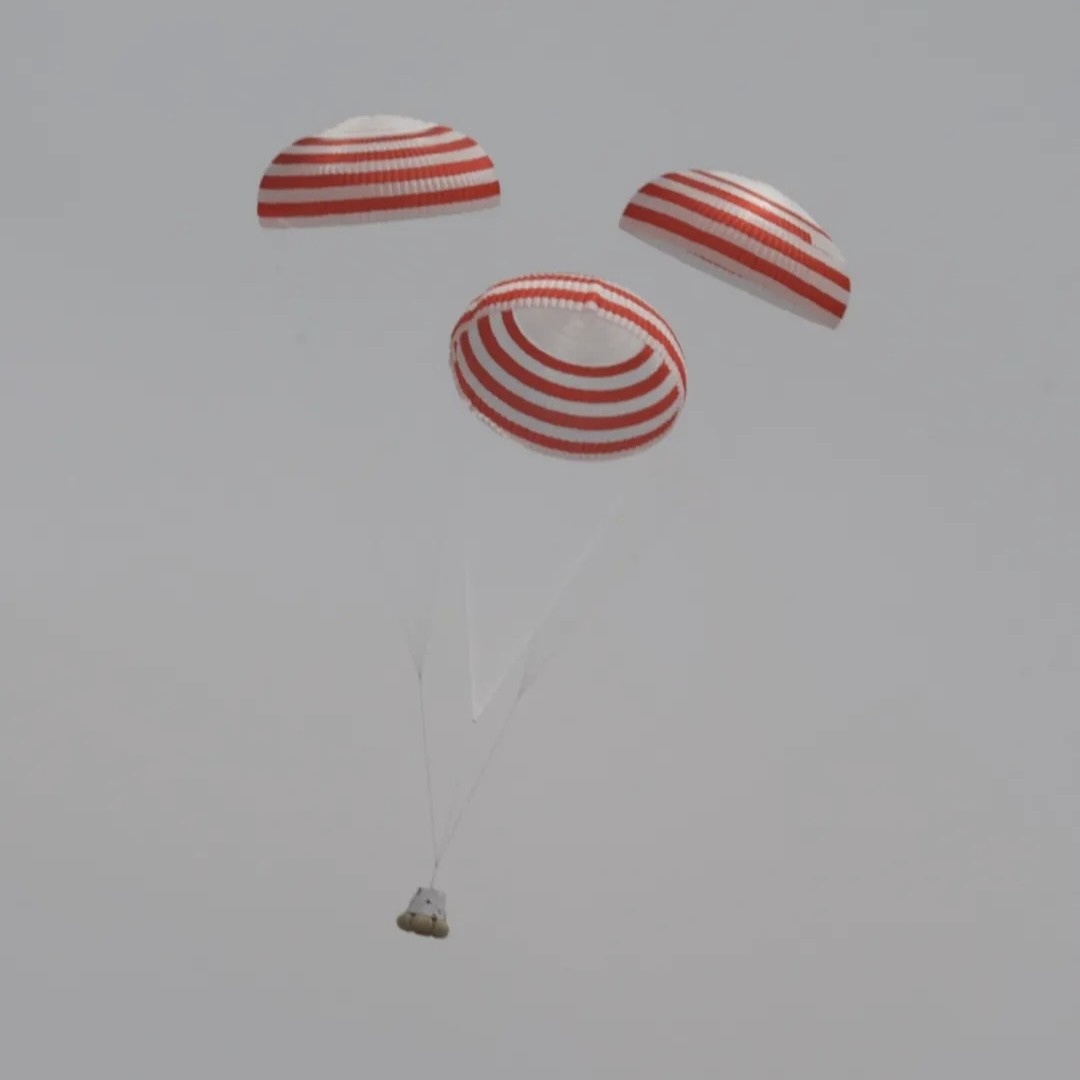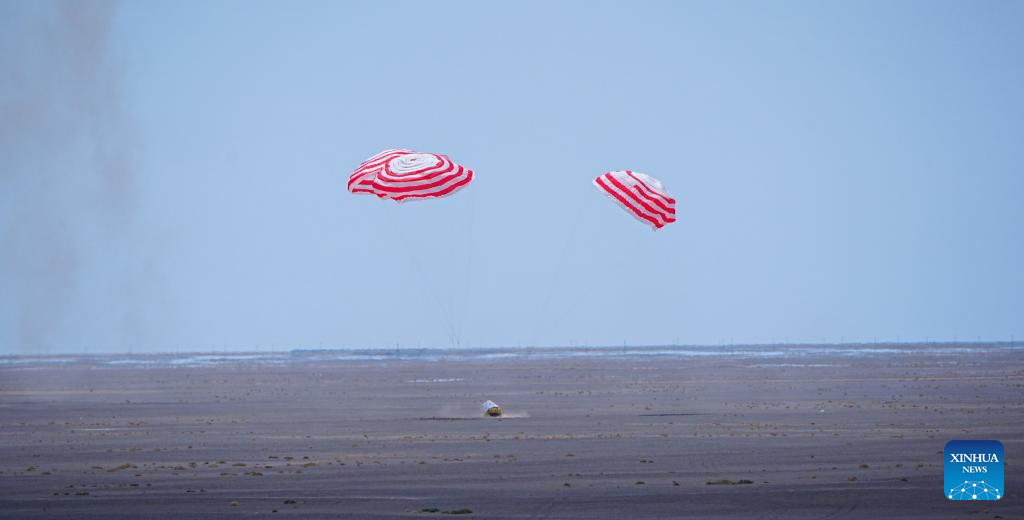19.06.2025
The country is hoping the next boots on the lunar surface will be those of a taikonaut, not an astronaut.

China is advancing the development of the technology it needs to try to beat NASA back to the moon.
The China Manned Space Engineering Office (CMSEO) completed a pad abort test of its Mengzhou spacecraft today (June 17), marking another step forward in its efforts to send Chinese astronauts, or taikonauts, to the lunar surface for the first time. The zero-altitude escape sequence was initiated at 12:30 p.m. Beijing time (12:30 a.m. EDT; 0430 GMT), from the Jiuquan Satellite Launch Center in northwest China.
With just the Mengzhou spacecraft on the pad (no rocket), the solid rocketescape engines on the capsule's abort tower fired for approximately 20 seconds, according to CMSEO. At altitude, Mengzhou's escape tower was jettisoned, and a trio of parachutes guided the spacecraft safely back to the desert surface, touching down with an airbag cushion at 12:32 p.m. BJT (12:32 a.m. EDT; 0432 GMT). CMSEO called the test "a complete success."

China's Mengzhou spacecraft returns to Earth during a pad-abort test on June 17, 2025. (Image credit: CMSEO)
Tests like this allow spacecraft engineers to verify safety systems of new spacecraft without putting crews' lives on the line. In the event of an in-flight emergency during an actual launch, Mengzhou's capsule escape tower is designed to propel the spacecraft away from the rocket in order to put a safe distance between the crew and potential disaster.
The capability has been built into nearly every spacecraft designed to transport crews since the beginning of spaceflight. NASA's Orion spacecraft, responsible for ferrying astronauts to the moon as a part of the U.S. space agency's Artemis program, underwent a similar test in 2019.
While China is slightly behind in its progress, the nation's efforts to beat the U.S. back to the moon may be gaining momentum just as NASA's own plans for a lunar return run into a speed bump.
The White House's proposed 2026 NASA budget leaves much of the Artemis program's future in question. For example, it calls for the cancellation of Orion and the Space Launch System (SLS) rocket responsible for launching the spacecraft after the Artemis 3 moon-landing mission, which is currently targeted for 2027.
The likely next step for Mengzhou will be an in-flight abort test, carried higher in altitude by one of China's Long March rockets. The country is developing the Long March 10 for Mengzhou's operational missions, which will be capable of flying crews to low Earth orbit and orbit around the moon in conjunction with its Lanyue lunar lander, which is also under development.
Quelle: SC
+++
China's new-generation manned spacecraft completes zero-altitude escape flight test

This photo taken on June 17, 2025 shows a scene during an escape flight test on China's new-generation manned spacecraft Mengzhou at zero altitude in northwest China. China successfully conducted the test on Tuesday, taking an important step forward in its manned lunar exploration program. (Photo by Wang Heng/Xinhua)
China successfully conducted an escape flight test on its new-generation manned spacecraft Mengzhou at zero altitude on Tuesday, marking an important step forward in its manned lunar exploration program.
Conducted at the Jiuquan Satellite Launch Center in northwest China, this test signifies China's second zero-altitude escape flight test, 27 years after such a test by the Shenzhou manned spacecraft in 1998.
At 12:30 p.m., the ignition command was issued, and the escape engines of Mengzhou were successfully ignited. Powered by solid rocket motors, the integrated spacecraft and launch escape tower assembly rapidly ascended, reaching its designated altitude in about 20 seconds.
Following this, the return capsule safely separated from the escape tower, and the parachute system deployed as planned. By 12:32 p.m., the return capsule made a soft landing in the predetermined recovery zone, utilizing its airbag cushioning system, marking the complete success of this crucial test.
The Mengzhou system, unlike the Shenzhou's approach where "the launch vehicle handled escape functions while the spacecraft managed crew survival," integrates both escape and survival capabilities into a unified spacecraft architecture, according to the China Manned Space Agency (CMSA).
The test successfully evaluated the spacecraft's integrated escape-rescue subsystem and its supporting systems. It validated the design integrity and system compatibility of critical functions, including escape sequence timing, escape separation mechanisms and closed-loop control of escape trajectories. Valuable real-flight performance data of the escape system was also gathered through the test.
The CMSA disclosed that, the escape and rescue are important safety guarantee measures for manned space flight missions. In the event of a sudden failure during the mission, these measures can swiftly guide the return capsule, carrying astronauts, away from dangerous situations and ensure the astronauts return to the ground safely.
Mengzhou is a new generation of manned space-to-ground round-trip transport vehicle which is independently developed by China for the subsequent manned spaceflight missions. It adopts a modular design and can carry up to seven astronauts. Additionally, its overall performance has reached the international advanced level.
Mengzhou will become the core manned spacecraft sustaining the application and development of China's space station, manned lunar exploration and other tasks. The successful test on Tuesday has laid an important technical foundation for the subsequent manned lunar exploration missions, said the CMSA.
Development of other major equipment for the manned lunar exploration missions, such as the Long March-10 carrier rocket and the lunar lander, are advancing steadily, and related tests will be implemented as planned in the future, the CMSA added. ■

This photo taken on June 17, 2025 shows a scene during an escape flight test on China's new-generation manned spacecraft Mengzhou at zero altitude in northwest China. China successfully conducted the test on Tuesday, taking an important step forward in its manned lunar exploration program. (Photo by Wang Heng/Xinhua)

This photo taken on June 17, 2025 shows a scene during an escape flight test on China's new-generation manned spacecraft Mengzhou at zero altitude in northwest China. China successfully conducted the test on Tuesday, taking an important step forward in its manned lunar exploration program. (Photo by Wang Heng/Xinhua)

This photo taken on June 17, 2025 shows a scene during an escape flight test on China's new-generation manned spacecraft Mengzhou at zero altitude in northwest China. China successfully conducted the test on Tuesday, taking an important step forward in its manned lunar exploration program. (Photo by Wang Heng/Xinhua)

This photo taken on June 17, 2025 shows a scene during an escape flight test on China's new-generation manned spacecraft Mengzhou at zero altitude in northwest China. China successfully conducted the test on Tuesday, taking an important step forward in its manned lunar exploration program. (Photo by Wang Heng/Xinhua)

This photo taken on June 17, 2025 shows a scene during an escape flight test on China's new-generation manned spacecraft Mengzhou at zero altitude in northwest China. China successfully conducted the test on Tuesday, taking an important step forward in its manned lunar exploration program. (Photo by Wang Heng/Xinhua)
Quelle: Xinhua
